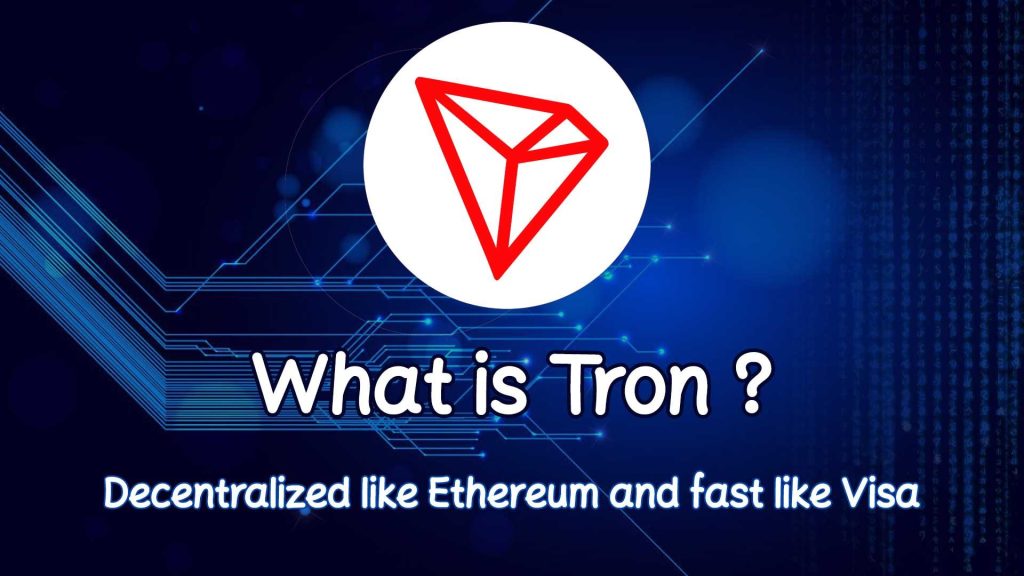Tron is one of the most famous and most popular blockchains that attracts any investor. It is considered Ethereum’s rival and it also claims to be a strong rival to Ethereum. In this article, we are going through Tron and explaining everything about this blockchain and its cryptocurrency. Stay with us.
What is Tron?
Tron is a blockchain network aiming to create a decentralized internet. This blockchain claims to be highly scalable and to have the ability to support a wide range of decentralized applications. It actually claims that it is able to support 2,000 transactions per second with a near-zero fee. Like Ethereum, you can use Tron to create tokens. Tron’s two standards for creating tokens are TRC-10 and TRC-20. TRC-10 is not reliant on the Tron Virtual Machine (TVM), while TRC-20 uses the TVM and is appropriate for more complex smart contracts. One of the most famous tokens that have been developed on Tron is “BitTorrent (BTT)”. This is a TRC-10 token.
How does Tron work?
Tron has a complex design. It uses a three-layer architecture. These three layers are:
- The storage layer
- The core layer
- The application layer
The storage layer is used for storing the blocks and the overall state of the blockchain. The core layer includes the smart contract module, the account management module, and the consensus module. The programming language for coding smart contracts on Tron is Java. The application layer lets developers use interfaces to create decentralized applications and customize wallets.
Tron also has three types of nodes:
- Super Representative Witnesses (SR)
- Full Nodes
- Solidity Nodes
Super Representative Witnesses are those nodes who validate the transactions, create the blocks, and earn rewards. Full Nodes are responsible for providing API and also publishing the blocks. And finally, Solidity Nodes synchronize irrevocable blocks.
Tron’s consensus algorithm is Delegated Proof of Stake (DPoS). It has 27 delegates that create the blocks and earn rewards. All TRX holders can vote to their favorite delegates. All they need to do is to stake their TRX tokens in the network and earn TronPower or TP instead. Each unit of TRX equals one TP. By the way, not all TRX holders can become delegates. One condition for becoming a delegate is that you stake at least 9,999 units of TRX in the network. The voting process is done every 6 hours and the list of the delegates is updated regularly. Tron’s block time is only 3 seconds and its reward is 32 units of TRX per block. Tron’s team claims that this network is highly democratic, but some experts disagree with this. For example, Vitalik Buterin, Ethereum’s founder, criticizes Tron’s consensus algorithm for being centralized.
Who created Tron?
Tron was developed by a Chinese entrepreneur called Justin Sun. Before Tron, Sun worked on Ripple. The second important figure in the Tron team is Lucien Chen. He was among the chief employees in companies like Tencent and Alibaba. No significant data is at hand about the other members of the Tron team. Tron claims to have 100 employees who all have work experience in famous companies like Tencent, Alibaba, and Baidu. It’s interesting to know that Tron was at first a network on Ethereum. In May 2018, Tron’s mainnet was officially launched and all the tokens were transferred to the mainnet.
The TRX token
At the time of writing, each unit of TRX is being traded at $0.06. Its market cap equals $5,550,321,220 and it’s the thirtieth-largest cryptocurrency by market cap. Tron has not set a max supply for its tokens, but at the time of writing, more than 92 million units of TRX are in circulation. The TRX token was officially launched and released in 2017, and its price at that time equaled $0.002. So, it’s obvious that this token’s price has had a significant growth in its lifetime.
TRX wallets
As we previously mentioned, TRX is no longer an ERC-20 token, so you can’t use Ethereum wallets to store this token. However, due to Tron’s popularity, a large number of cryptocurrency wallets exist that support its token. Some of these wallets include:
- TronLink (mobile and browser extension)
- Atomic Wallet (desktop and mobile)
- Trust Wallet (mobile)
- Exodus Wallet (desktop and mobile)
- Guarda Wallet (mobile)
- Ledger Nano S (hardware)
- Trezor (hardware)
Conclusion
Like many other cryptocurrencies, Tron has been developed as a smart-contract-supporting, and more importantly, as a scalable blockchain network. Tron claims to be able to support 2,000 transactions per second, as this is while this number is just 12 to 15 for Ethereum. By the way, many believe that Tron has victimized decentralization for achieving this scalability. Do you think Tron will replace Ethereum because of its higher scalability? What effects can the launch of Ethereum 2.0 have on blockchains like Tron? Share your opinions with us.
If you’re in Dubai and want to dive into the exciting world of cryptocurrencies, look no further than crypto exchange in dubai Cryptodesk
